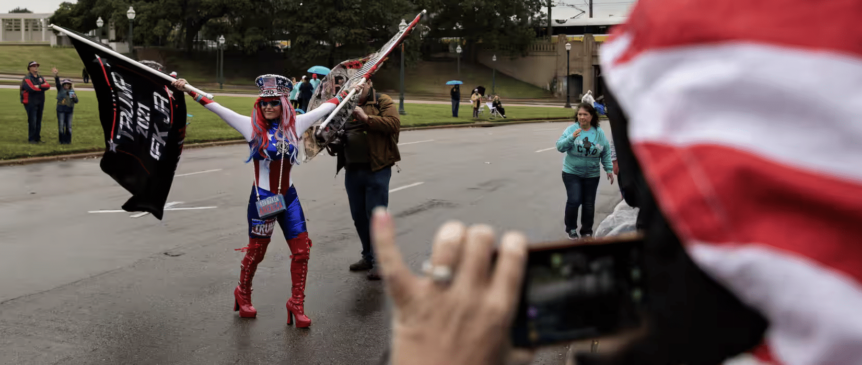
Storming the Capitol in Larson-Olson v. U.S.
A close relative told me prior to January 6, 2021 that, but for a prior commitment, he would have joined friends in traveling to D.C. to protest the stolen election.
He spoke warmly of the people who would be making the trip.
If the many phone calls I received prior to January 6 are any indication, then I have no doubt that there were in fact many polite people who “toured” the Capitol building that day.
My webpage on the “possession of a prohibited weapon in D.C.” was number 1 on google at that time. So I got a lot of calls from people who, planning their trip, needed to know what to pack.
Could they bring brass knuckles? No.
Could they bring a sawed off shotgun? No.
Could they bring a switchblade? No.
And so on.
I can also say that, without exception, every person who contacted me prior to that day was polite and respectful. Many people apologized for taking up my time. Many even tried to pay me for my advice.
And every one of them, as far as I am concerned, was seriously deluded.
Case in point: Micki Larson-Olson
According to the D.C. Court of Appeals’ recent decision in Larson-Olson v. United States, __ A.3d __ (D.C. 2024), Larson-Olson arrived late to the Capitol grounds. She testified at trial that, because there were no longer any barriers standing, she did not know that entry onto the scene was prohibited. After all, notice and criminal intent are both important components of Unlawful Entry.
But entering property against the will of the lawful occupant/owner is only one way to violate the statute. Remaining on property despite an order to leave is another, and this is where Larson-Olson’s defense fell short.
According to the opinion, Larson-Olson refused multiple commands by police to leave; it eventually “took a total of six officers to carry her down three or four flights of stairs as she continued to grab at various handholds to impede their progress.”
This is where the deluded part comes in.
Larson-Olson testified at trial that the officers “had no authority” over her because they were agents of an illegitimate government. Specifically, the officers were employed by “the United States corporation, . . . not the United States for America republic[,] . . . because our nation was hijacked in 1871” and we have “been under admiralty law ever since.”
So what was she trying to appeal?
The Court quickly rejected her argument that there was insufficient evidence to convict her of Unlawful Entry. After all, the jury was shown body worn camera footage of her struggle with police as they attempted to eject her, and she herself admitted that, although she “listened” to the officers, she “wasn’t going to comply.”
As for her claim that trial judge Michael O’Keefe was biased against her, it was difficult to disagree with the judge’s assessment that some of her beliefs were “delusional” and “not grounded in any facts.” And why waste the jury’s time with a trial when she herself admitted the elements of the offense?
Finally, the court did not find that, by imposing the maximum sentence of 180 days of incarceration, the judge was seeking to punish her for exercising her constitutional right to trial: The flipside of the ability to reward a defendant for acceptance of responsibility is the discretion to “withhold leniency from others who appear less deserving.” Coles v. United States, 682 A.2d 167, 169 (D.C. 1996).
Attorney Dan Dorsey represented Larson-Olson at trial. Anne Keith Walton represented her on appeal.
